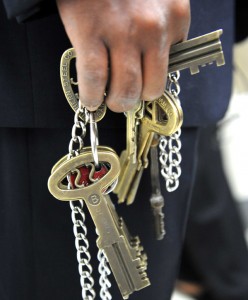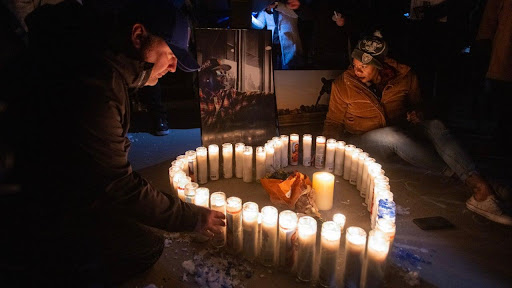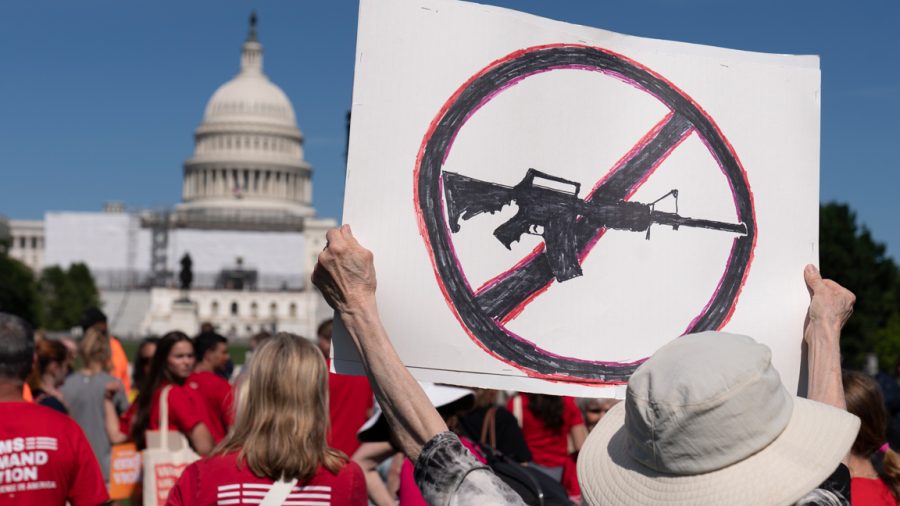
As Jerry Brown made his first Inaugural Address for the second time in his career on Monday in Sacramento, many are now left wondering what, if any, issues will be affected by the winds of change.
One such issue is the unresolved lawsuit between Marin County and Governor Schwarzenegger over the proposed $356 million new Condemned Inmate Complex (CIC) at California’s male-only death row in San Quentin State Prison.
In November, Marin, along with local State Assemblyman Jared Huffman and State Senator Mark Leno, filed legal action with the state through the Marin Superior Court, stating that, among many things, Schwarzenegger’s use of a line item veto to pass the CIC building plan though budget appropriations was unlawful.
The project has been green-lighted since 2009, but planning has been delayed by the uncertainties regarding the economy and state budget.
The Department of Corrections and Rehabilitation is currently receiving bids from prospective construction firms for the first phase of development, which have ranged from $126 to $145 million—all of which have the project coming in under budget.
Schwarzenegger and his administration have defended the building of the new CIC as an issue of maintenance in which the state is legally obligated to provide adequate accommodations for death row inmates and staff.
“[An] incredibly favorable bid climate [is] in California,” said H.D. Palmer, Deputy Director for External Affairs of the California Department of Finance. “Construction firms are very eager to do business, particularly with the state.”
Before January, the state could not use independent construction bonds and needed to borrow from the general fund because of an ongoing lawsuit between the governor’s office and the legislature. The swearing-in of Jerry Brown brings a new dichotomy to these power struggles but does not bring resolution to any of them.
As Palmer points out, the downturn amongst the entire industry of industrial construction means that large public clients such as the state of California can secure cheap bids on projects, considering that they can be funded at all.
He does, however, point out that the Schwarzenegger administration has been completely dependent on borrowing the same tax dollars that it has sworn to protect.
Critics have fired back that in a time where the state cannot agree on a budget or project a revenue of anything less than crippling deficit, the governor’s office should not be funding expensive prison expansions initiatives. Assemblyman Huffman and Senator Leno also claim that the plan to place 1,152 beds in 768 cells constitutes overcrowding—traditionally condemned inmates are given their own cell.
State Senator Leno has stated that, “While California is in the midst of a dire financial crisis, the Schwarzenegger administration is pushing forward with the expansion of San Quentin’s death row, without first exploring any alternatives.”
“Borrowing $64 million from the state’s deteriorating General Fund in order to advance his favorite pet prison project: the $400 million ‘Cadillac Death Row’ at San Quentin,” Assemblyman Huffman echoed his counterpart in opposition to now ex-Governor Schwarzenegger.
Based out of San Rafael, which is only miles away from California’s oldest and one of its largest penitentiaries, Huffman and much of his Marin County constituency have generally opposed San Quentin State Prison on almost every political issue.
In 2009, he supported a bill for the state to sell the San Quentin facility and build a new prison relocated to Central California. Huffman represents the beliefs of many amongst his traditionally liberal district that do not like “Tough on Crime” policies being implemented in their backyard.
Although there are a few grumblings of a pro-law enforcement contingent in Marin County represented by the Citizens Against Homicide and the Marin G.O.P., it is not apparent that anybody in the neighborhood necessarily wants a new death row facility to be built at San Quentin.
Some might view Marin County’s opposition to San Quentin, represented in November’s lawsuit, as an example of discretionary N.I.M.B.Y. (Not In My Backyard)-ism in which the liberal citizens are more hostile to the fact that the prison is down the street than whether or not the practices it maintains are humane.
The Death Penalty Focus, a nonprofit anti-death penalty advocacy organization based in San Francisco believes the struggles over the new death row facility represent California’s many failed policies toward capital punishment in the past.
Associate Director Stephanie Faucher stated that the organization is “opposed to spending more money on the death penalty wasting money on a dysfunctional system,” which is, “broken and it can’t be fixed and it’s a waste of taxpayer recourses.”
In this sense, the lawsuit to stop the state from conducting executions in Marin is a crucial step in the process to end the “dysfunctional system” of the death penalty in California. Since 1976, when the U.S. Supreme Court reinstated the death penalty after a brief hiatus with the decision of Gregg v. Georgia, 13 people have been executed in the state of California.
When the millions in court fees are added to the cost of housing and maintaining convicted inmates, it is easy to see that each prisoner who lives to see his or her execution is costing the taxpayer dearly.
Jerry Brown has offered no assurance that these political and bureaucratic issues will be resolved in the immediate future.
In his inaugural address he stated, “The budget I propose will assume that each of us who are elected to do the people’s business will rise above ideology and partisan interest and find what is required for the good of California.”
However, political bickering will continue and Jerry Brown’s “Tough on Crime” rhetoric of his days as Attorney General may collide with his need to balance the budget and please his Democratic supporters.
It is not apparent that if Jerry Brown will even have the means to overturn the decisions of his predecessor if he opposes them. In the meantime, the construction of the new death row chamber in San Quentin will remain in question, along with the entire institution of the death penalty. Now that California’s tab has become increasingly challenging to pay, each individual charge will have to be heavily scrutinized.












